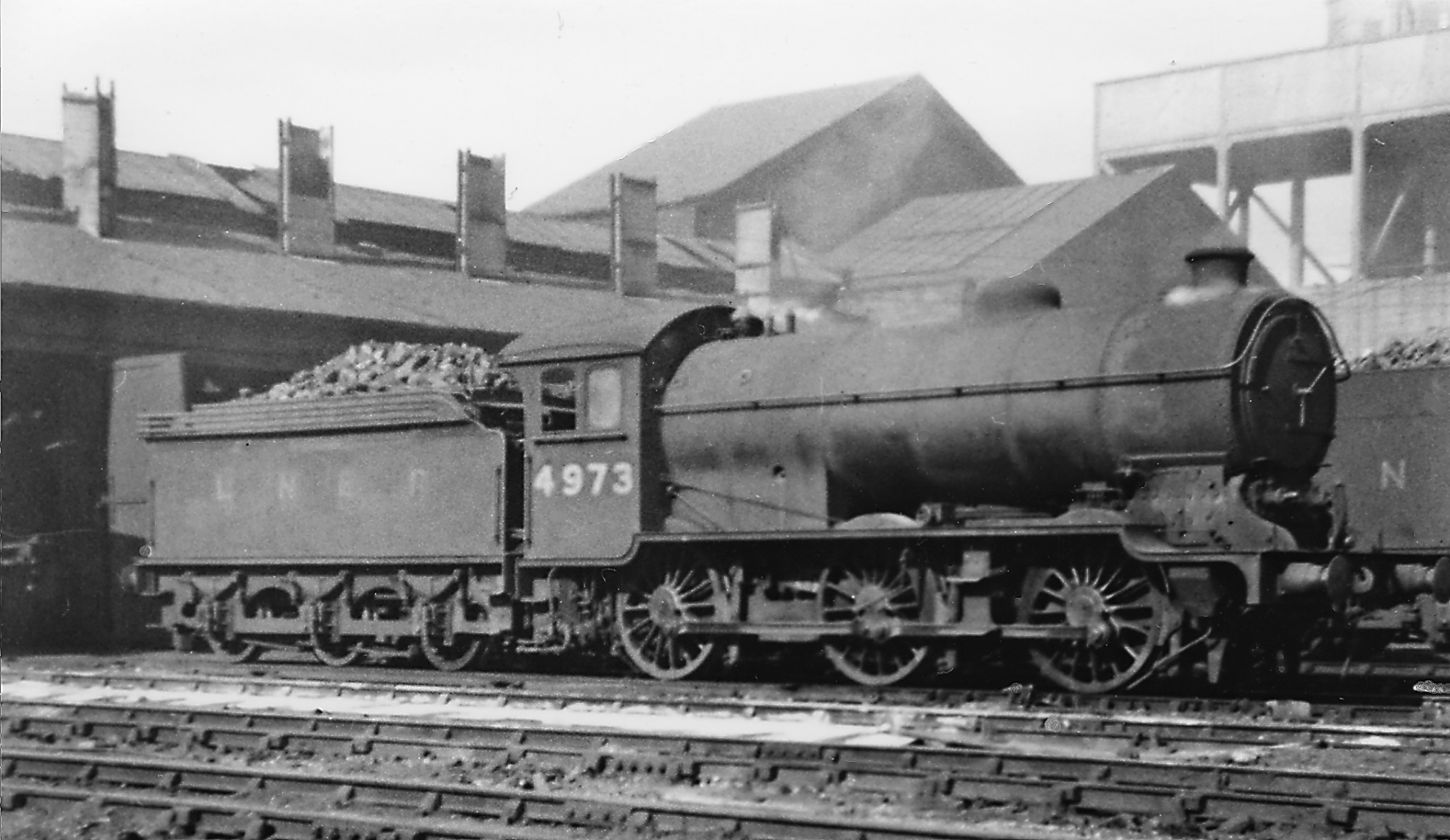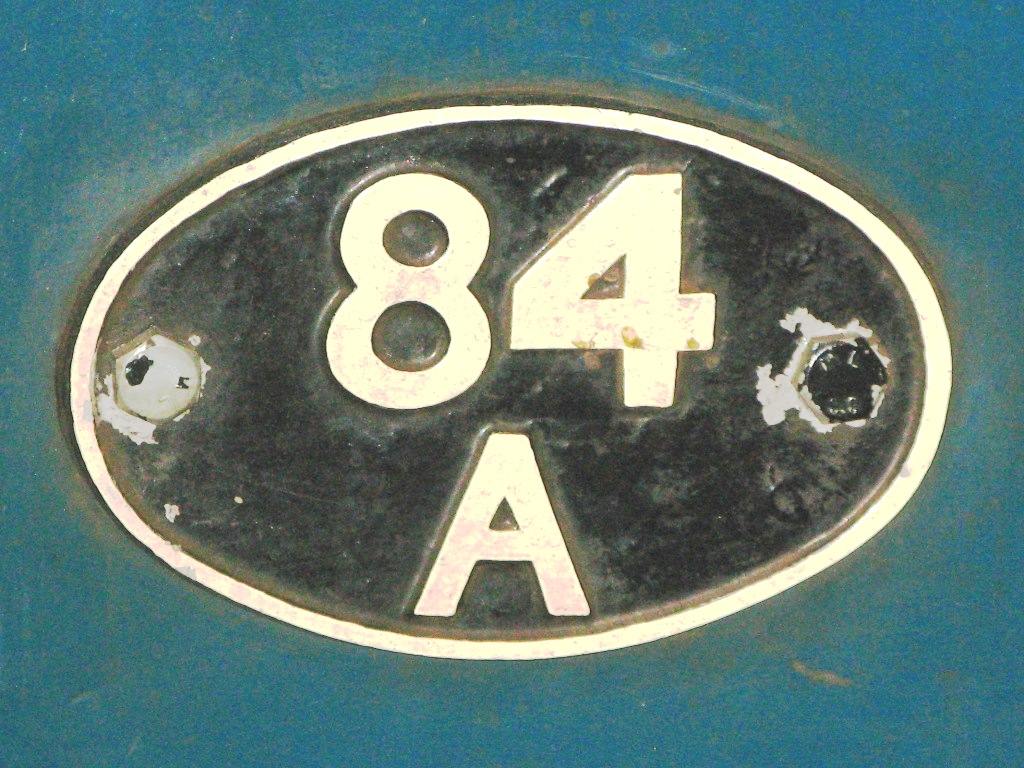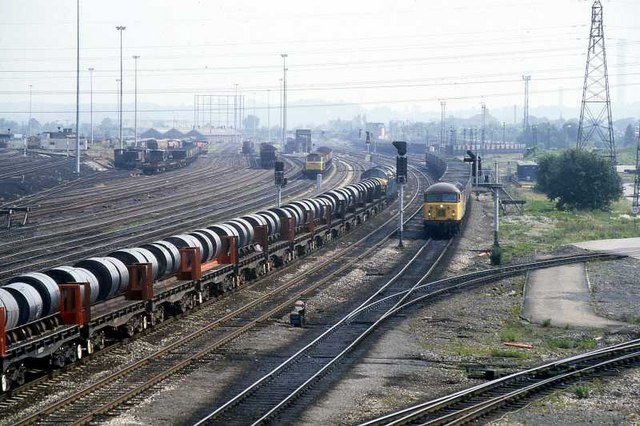|
Immingham Engine Shed
Immingham engine shed, also known as Immingham depot, or more recently as Immingham TMD and is a railway maintenance depot (traction maintenance depot) located on the Immingham Dock estate, in North East Lincolnshire, England. The depot code is ''IM''. In 2015 the depot was operated by DB Schenker. A separate TMD also known as Immingham TMD, but with the depot code ''IN'', is operated by Freightliner. History The engine shed was built by the Humber Commercial Dock and Railway company in the southeastern corner of the Immingham Dock estate. As initially built the engine shed had twelve "roads" (tracks) providing facilities for 60 locomotives. The railways at Immingham were worked by the Great Central Railway, the developer of the Port. In 1923 it was taken over by the LNER and then became part of the Eastern Region of British Railways in 1948. During the LNER period (1930s) a concrete automatic coaling stage was added to the facilities. During the British Railways period ... [...More Info...] [...Related Items...] OR: [Wikipedia] [Google] [Baidu] |
Immingham
Immingham is a town, civil parish and ward in the North East Lincolnshire unitary authority of England. It is situated on the south-west bank of the Humber Estuary, and is north-west from Grimsby. The region was relatively unpopulated and undeveloped until the early 1900s, when the Great Central Railway began developing its Immingham Dock; as a consequence of the dock development, and of nearby post-Second World War large scale industrial developments Immingham developed from a minor place into a significant town during the 20th century. The Port of Immingham & Grimsby was the largest port in the United Kingdom by tonnage with 54 million tonnes of cargo passing through in 2019. Geography Council ward The Immingham Ward of North East Lincolnshire Council includes Stallingborough, Healing and Habrough. As of 2018, its elected councillors are Stewart Swinburn (Conservative), David Bolton (Labour), and David Watson (Labour). Population of the ward in 2001 was 11,804 per ... [...More Info...] [...Related Items...] OR: [Wikipedia] [Google] [Baidu] |
BR Standard Class 9F
The British Railways Standard Class 9F 2-10-0 is a class of steam locomotive designed for British Railways by Robert Riddles. The Class 9F was the last in a series of standardised locomotive classes designed for British Railways during the 1950s, and was intended for use on fast, heavy freight trains over long distances. It was one of the most powerful steam locomotive types ever built for British Railways, and successfully performed its intended duties. The class was given the nickname of 'Spaceships', due to its size and shape. At various times during the 1950s, the 9Fs worked passenger trains with great success, indicating the versatility of the design, sometimes considered to represent the ultimate in British steam development. Several experimental variants were constructed in an effort to reduce costs and maintenance, although these met with varying degrees of success. They were also capable of reaching speeds of up to 90 miles per hour (145 km/h). The total number ... [...More Info...] [...Related Items...] OR: [Wikipedia] [Google] [Baidu] |
Lincolnshire Wolds Railway
The Lincolnshire Wolds Railway (LWR) is a heritage railway based at Ludborough station, near Louth, Lincolnshire, England and the only standard gauge steam railway in Lincolnshire open to the public. The line is part of the original Great Northern Railway (GNR), a rail system that opened in 1848 and once linked Grimsby, Louth and East Lincolnshire with London. In early 2002, 2009 and 2013 the Lincolnshire Wolds Railway received a top national award from the Heritage Railway Association for its heritage railway efforts. History Construction of the railway began in 1846 and was completed in 1848. The line ran from Louth to New Holland and was officially opened on 28 March 1848 as the first section of the GNR. The line was constructed by the East Lincolnshire Railway Co (ELR), which leased it to the GNR when they could not raise sufficient funds to operate it. The GNR had obtained running rights over the MS&L from Grimsby to New Holland Pier; in return it allowed the MS&L running ... [...More Info...] [...Related Items...] OR: [Wikipedia] [Google] [Baidu] |
Stockport
Stockport is a town and borough in Greater Manchester, England, south-east of Manchester, south-west of Ashton-under-Lyne and north of Macclesfield. The River Goyt and Tame merge to create the River Mersey here. Most of the town is within the boundaries of the historic county of Cheshire, with the area north of the Mersey in the historic county of Lancashire. Stockport in the 16th century was a small town entirely on the south bank of the Mersey, known for the cultivation of hemp and manufacture of rope. In the 18th century, it had one of the first mechanised silk factories in the British Isles. Stockport's predominant industries of the 19th century were the cotton and allied industries. It was also at the centre of the country's hatting industry, which by 1884 was exporting more than six million hats a year; the last hat works in Stockport closed in 1997. Dominating the western approaches to the town is Stockport Viaduct. Built in 1840, its 27 brick arches carry the mai ... [...More Info...] [...Related Items...] OR: [Wikipedia] [Google] [Baidu] |
Grimsby
Grimsby or Great Grimsby is a port town and the administrative centre of North East Lincolnshire, Lincolnshire, England. Grimsby adjoins the town of Cleethorpes directly to the south-east forming a conurbation. Grimsby is north-east of Lincoln, England, Lincoln, (via the Humber Bridge) south-south-east of Kingston upon Hull, Hull, south-east of Scunthorpe, east of Doncaster and south-east of Leeds. Grimsby is also home to notable landmarks such as Grimsby Minster, Port of Grimsby, Cleethorpes Beach and Grimsby Fishing Heritage Museum. Grimsby was once the home port for the world's largest fishing fleet around the mid-20th century, but fishing then fell sharply. The Cod Wars denied UK access to Icelandic fishing grounds and the European Union used its Common Fisheries Policy to parcel out fishing quotas to other European countries in waters within of the UK coast. Grimsby suffered post-industrial decline like most other post-industrial towns and cities. However, food pro ... [...More Info...] [...Related Items...] OR: [Wikipedia] [Google] [Baidu] |
Headington
Headington is an eastern suburb of Oxford, England. It is at the top of Headington Hill overlooking the city in the Thames valley below, and bordering Marston to the north-west, Cowley to the south, and Barton and Risinghurst to the east. The life of the large residential area is centred upon London Road, the main road between London and Oxford. History The site of Headington shows evidence of continued occupation from the Stone Age, as the 2001 field excavations in Barton Lane found, suggesting a date in the 11th century BC. Pottery was found on the Manor Ground, suggesting an Iron Age settlement there in the 7th century BC. Roman kilns from about 300 have been found, including one now on display at the Museum of Oxford. Anglo-Saxon burial remains from about 500 have also been discovered. Headington's toponym is derived from the Old English ''Hedena's dun'', meaning "Hedena's hill", when it was the site of a palace or hunting lodge of the Kings of Mercia. In a charter of 1 ... [...More Info...] [...Related Items...] OR: [Wikipedia] [Google] [Baidu] |
Leeds
Leeds () is a city and the administrative centre of the City of Leeds district in West Yorkshire, England. It is built around the River Aire and is in the eastern foothills of the Pennines. It is also the third-largest settlement (by population) in England, after London and Birmingham. The city was a small manorial borough in the 13th century and a market town in the 16th century. It expanded by becoming a major production centre, including of carbonated water where it was invented in the 1760s, and trading centre (mainly with wool) for the 17th and 18th centuries. It was a major mill town during the Industrial Revolution. It was also known for its flax industry, iron foundries, engineering and printing, as well as shopping, with several surviving Victorian era arcades, such as Kirkgate Market. City status was awarded in 1893, a populous urban centre formed in the following century which absorbed surrounding villages and overtook the nearby York population. It is locate ... [...More Info...] [...Related Items...] OR: [Wikipedia] [Google] [Baidu] |
Shepperton
Shepperton is an urban village in the Borough of Spelthorne, Surrey, approximately south west of central London. Shepperton is equidistant between the towns of Chertsey and Sunbury-on-Thames. The village is mentioned in a document of 959 AD and in the Domesday Book. In the early 19th century, resident writers and poets included Rider Haggard, Thomas Love Peacock, George Meredith and Percy Bysshe Shelley, who were attracted by the proximity of the River Thames. The river was painted at Walton Bridge in 1754 by Canaletto and in 1805 by Turner. Shepperton Lock and nearby Sunbury Lock were built in the 1810s to facilitate river navigation. Urbanisation began in the latter part of the 19th century, with the construction in 1864 of the Shepperton Branch Line, which was sponsored by William Schaw Lindsay, the owner of Shepperton Manor. Its population rose from 1,810 residents in the early 20th century to a little short of 10,000 in 2011. Lindsay had hoped to extend the railw ... [...More Info...] [...Related Items...] OR: [Wikipedia] [Google] [Baidu] |
Ian Allan Publishing
Ian Allan Publishing was an English publisher, established in 1942, which specialised in transport books. It was founded by Ian Allan. In 1942 Ian Allan, then working in the public relations department for the Southern Railway at Waterloo station, decided he could deal with many of the requests he received about rolling stock by collecting the information into a book. The result was his first book, ''ABC of Southern Locomotives''. This proved to be a success, contributing to the emergence of trainspotting as a popular hobby in the UK, and leading to the formation of the company.Ian Allan…the man who launched a million locospotters ''The Railway Magazine'' issue 1174 February 1999 pages 20-27 The company grew from a small producer of books for train enthusiasts and spotters to a large transport publisher. Each year it published books covering subjects such as military and civil aviation, naval and maritime topics, buses, trams, trolleybuses and steam railways, including hi ... [...More Info...] [...Related Items...] OR: [Wikipedia] [Google] [Baidu] |
List Of British Railways Shed Codes
British Railways shed codes were used to identify the engine sheds that its locomotives and multiple units were allocated to for maintenance purposes. The former London, Midland and Scottish Railway (LMS) alpha-numeric system was extended to cover all regions and used until replaced by alphabetic codes in 1973. System of codes The coding system had its origins in a reorganisation of locomotive operation and maintenance on the LMS in the 1933-35 period. It grouped all sheds into districts with a main shed, given the district number followed by the letter A as its code, and subsidiary sheds with the same number followed by B, C, or D etc. Many sheds were also responsible for sub-sheds where day-to-day servicing could be carried out but which lacked the facilities for intermediate or heavy overhauls. The extension of the system to all regions was brought into use in 1950, each region being given a block of district numbers: * 1 – 28 London Midland Region * 30 – 41 Eastern Region ... [...More Info...] [...Related Items...] OR: [Wikipedia] [Google] [Baidu] |
Toton TMD
Toton Traction Maintenance Depot or Toton Sidings is a large traction maintenance depot located in Toton, Nottinghamshire. The TOPS depot code for the depot is TO. Before TOPS, the shed code was 16A (18A prior to 1963). Prior to the 2021 Integrated Rail Plan for the North and Midlands, the site was the proposed location of the East Midlands Hub railway station on the Leeds Branch of HS2. History The history of the development of Toton is highly associated with the history, development and decline of the coal industry in England. The Midland Railway had developed the Midland Main Line from the 1860s, and had a developing revenue from coal traffic from both the Yorkshire and Nottinghamshire coalfields to the power stations of the industrialised West Midlands. This traffic was added to by the fact that most towns also had their own gasworks, with coal delivered by rail to their own private sidings, and the rapidly developing domestic use of coal for heating and cooking. With nee ... [...More Info...] [...Related Items...] OR: [Wikipedia] [Google] [Baidu] |
TOPS
Total Operations Processing System (TOPS) is a computer system for managing railway locomotives and rolling stock, known for many years of use in the United Kingdom. TOPS was originally developed between the Southern Pacific Railroad (SP), Stanford University and IBM as a replacement for paper-based systems for managing rail logistics. A jointly-owned consultancy company, ''TOPS On-Line Inc.'', was established in 1960 with the goal of implementing TOPS, as well as selling it to third parties. Development was protracted, requiring around 660 man-years of effort to produce a releasable build. During mid-1968, the first phase of the system was introduced on the SP, and quickly proved its advantages over the traditional methods practiced prior to its availability. In addition to SP, TOPS was widely adopted throughout North America and beyond. While it was at one point in widespread use across many of the United States railroads, the system has been perhaps most prominently used ... [...More Info...] [...Related Items...] OR: [Wikipedia] [Google] [Baidu] |




.jpg)



